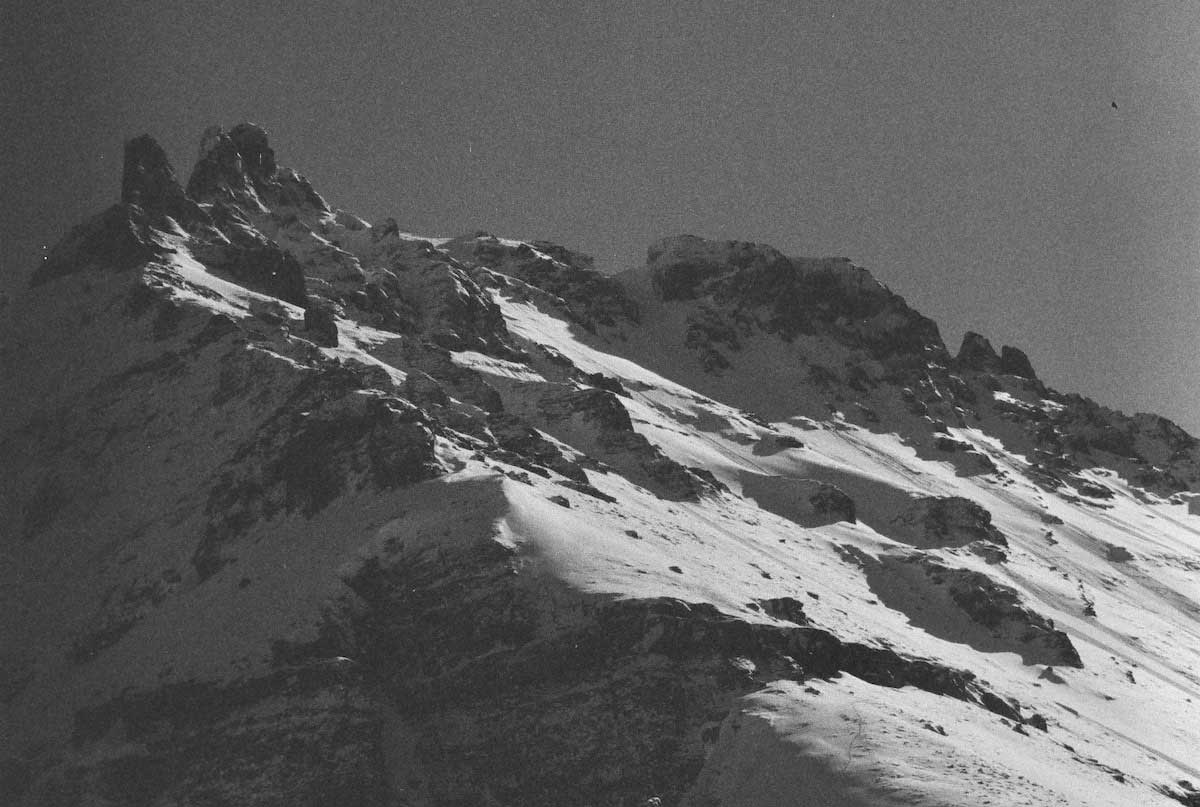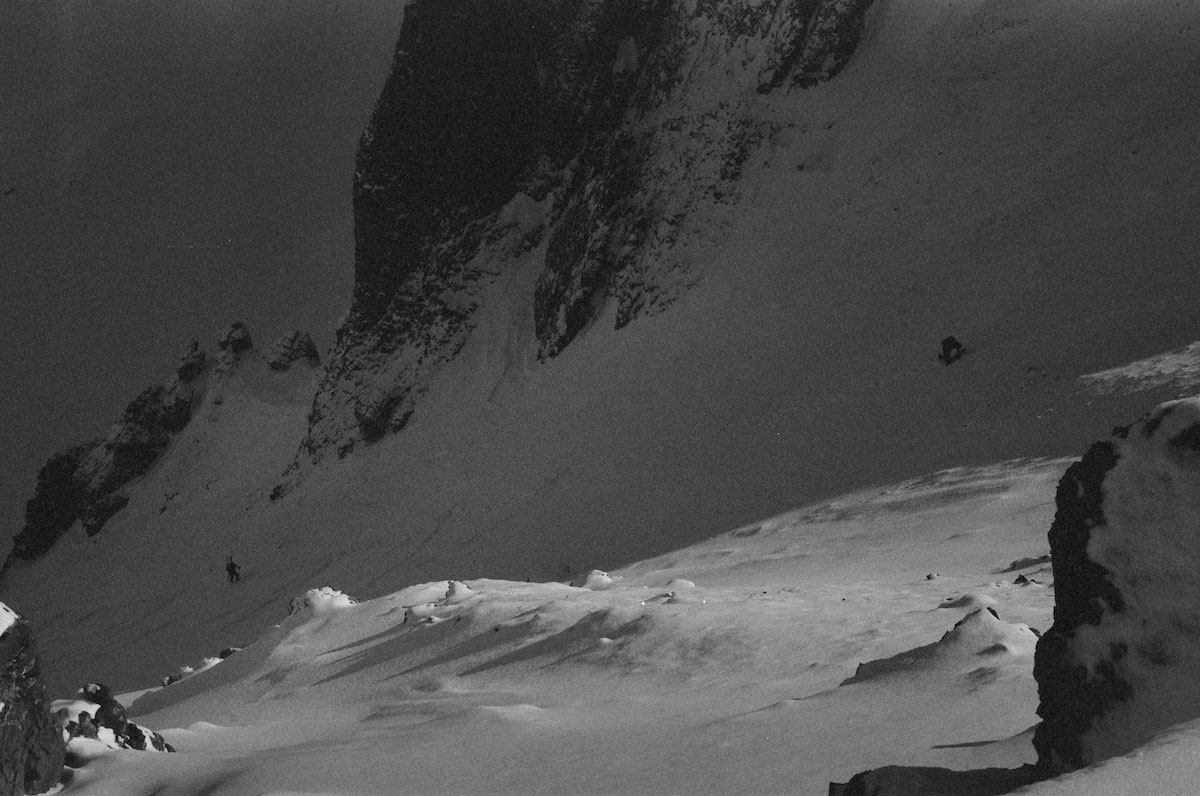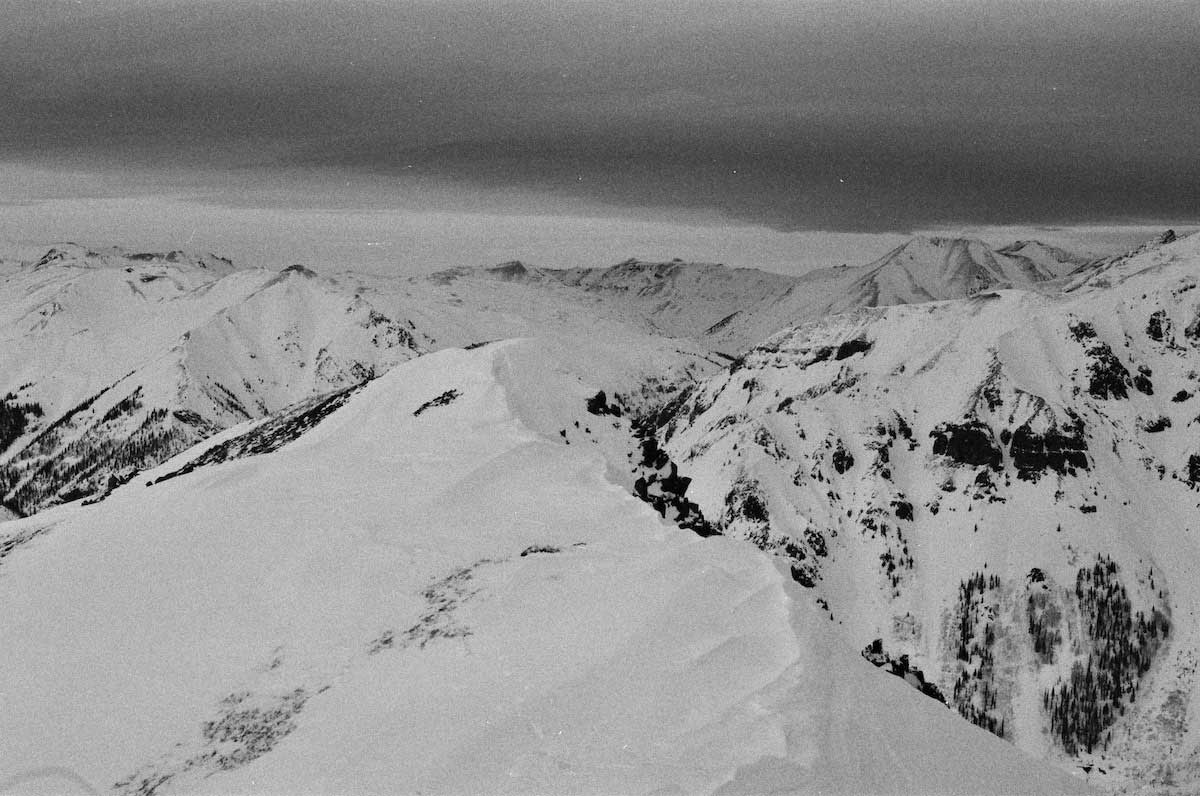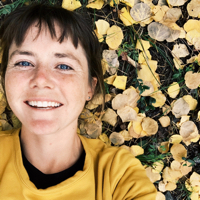I spread the maps out on the floor. My eyes dart from place to place, stringing out the spiderweb of routes I have in my head. I follow the contour lines but really, it’s the blank spaces between the lines that are the most intriguing: hidden waterfalls, sneaky couloirs, massive patches of wildflowers, cliff bands, and knife edges; it’s hard to say what exactly the land is made of. I know it’s also in those blank spaces that we discover a moment and place in time that takes our breath away.
We glide out into the snow-covered basin. I remark to my friend Cameron that I’ve always wanted to come here. Having run the ridges and peaks above us, located just outside my home in Colorado, dozens of times, I’ve never crossed below.
In the summer, a blue lake is perched in the nook of the basin — a nice campsite, I’ve always thought. We ski across and start climbing to the next ridge. We pause and look back. The basin seems huge from this vantage point, and maybe all the snow has something to do with it. It’s quiet and there’s not another soul around. The solitude of winter seems to carry a different hum.
I’ve realized we find our way through life not so differently than how we find our way through nature. It’s all route finding in some way. When there is no trail, it seems like the topography slowly and naturally unfolds ahead of us. Sometimes we have to cross a swamp, sometimes we have to crawl through hundreds of downed trees, and sometimes we trip and fall.
But we pick ourselves up, dust off the dirt, and amble onward. Such is life. And the pain … it is temporary. No matter how hard we hit the ground, we get back up and keep moving forward.
I find myself at a standstill. I stare down the cliff that drops away below my feet. I can’t move forward, at least not straightforward. Either I turn around, or I take the long way around.
Route finding is all about confronting obstacles as they arise. Sometimes where we think we will go and where we actually can go are two different things. Our animal instincts naturally guide us through the terrain. Whether navigating remote desert canyons, high mountains, or even places like the Alaskan bush, you’ll constantly stumble onto animal tracks following the rhythm and rhyme of the land.
Abby, Mary, and I worked our way down the mountainside. Deep in the Alaskan Brooks Range, our group had taken the day to explore a small tributary. Its turquoise waters were different from anything we had seen.
As we made our way along the creek, we notice movement across the small canyon. A single caribou. We stop and sit. As the crow flies, he’s only a couple of hundred feet away but separated from us by a roaring creek. He seems to not mind our presence. Like a front-row seat to a nature show, we sit and marvel.
Finding a path in life isn’t always so easy and beautiful as following a ridgeline or reaching a summit. But maybe if we could imagine the challenges of life like a landscape, maybe, just maybe, they too could be just as beautiful.
We ford the rivers of broken hearts and run the long, endless flats, searching for purpose. We climb the mountains of to-do lists and navigate the deep, dark, and often disorienting forests of second-guessing ourselves.
But through each hidden pocket, we learn a little bit more about ourselves. And I suppose that’s all we get to really do in life: explore who we are in the small fraction of time we have here. Whether out running through the hills or whittling away at work, we can try our best and take each moment of adversity in stride.
Call for Comments
- When have you had to put down your map of life and make your own path?
- And how about the same in nature?



